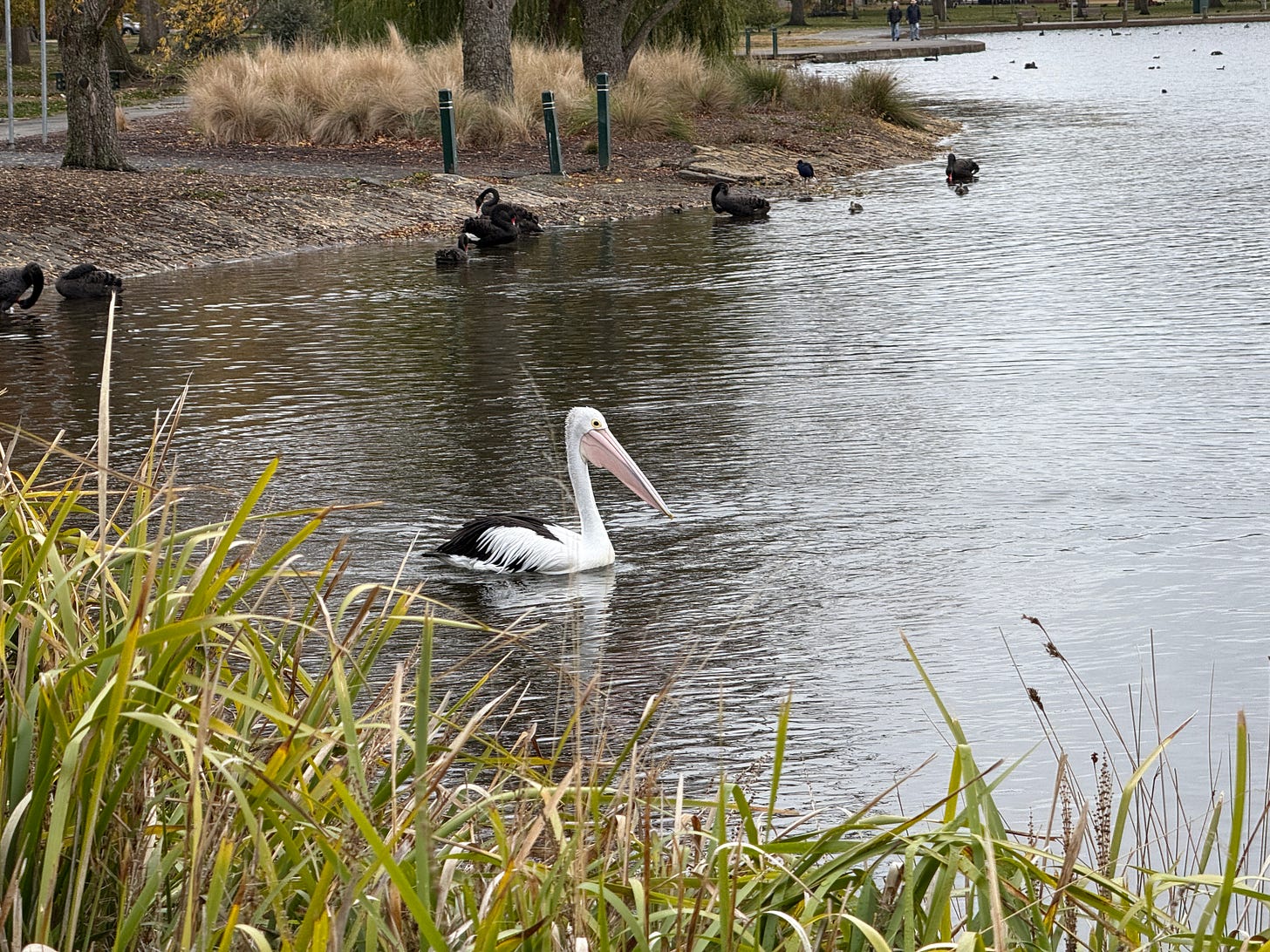The Australian Pelican has a prominent bare patch of skin around its eyes that gives it a spectacled look. Hence the name “Pelecanus conspicillatus”.
“Conspicillatus” is a Latin word that means "provided with spectacles" or "having spectacles”.
Its derivation can be broken down as follows:
con-: A Latin prefix meaning "with", "together", "thoroughly", or "intensively".
specere/spectare: Latin verbs meaning "to look", "to see", "to observe".
conspicere: A Latin verb formed from con- + specere, meaning "to catch sight of", "to perceive", "to discern".
conspicillum: A Latin noun derived from conspicere, meaning "a spyglass", "a looking-glass", or most significantly, "spectacles" (eyeglasses). It refers to an instrument used for thorough looking.
-atus: A common Latin adjectival suffix used to form past participles or adjectives, meaning "provided with", "furnished with", or "having".
According to Wikipedia, The Australian pelican is a large waterbird, widespread on the inland and coastal waters of Australia and New Guinea, also in Fiji, parts of Indonesia and as a vagrant in New Zealand. It is a predominantly white bird with black wings and a pink bill. It has been recorded as having the longest bill of any living bird. It mainly eats fish, but will also consume birds and scavenge for scraps if the opportunity arises.
This one is on Lake Wendouree, Ballarat, with a few black swans, and other waterbirds, in the background.




